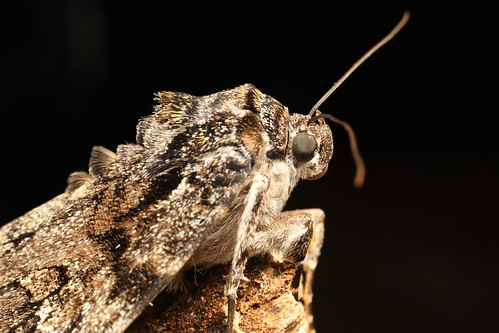Nicht ungewöhnlich moth, aber ein vornehm aussehender. Das ist catocala ilia (Erebidae) ((früher Noctuidae)), und er ernährt sich von einer Handvoll Eichen. Es kam mir am Wochenende in Süd-Illinois ins Licht, unten im Trail of Tears State Forest. Wie bei so vielen anderen Motten hat diese weit verbreitete Art eine Reihe von Variationen, die sich als unterschiedlich herausstellen können – bis zu einer Monographie der Gattung…
Ich habe jetzt eine Handvoll nette moth Bilder überhöht so mehr erwarten Montag Motten! (auch wenn dies ein Freitag moth).


How can I resist a post title such as yours? A monograph? Whom, pray-tell, might be publishing such a useful work? =)
Ignoring the otherwise very moth-y appearance of your highlighted moth, in isolation, it’s antennae would certainly have me scratching my head when going through my VERY crude “moth-or-butterfly” examination. So, are the tips of the antennae the same width as the rest, generally, no bulb or some such? And feel free to edify if I’m off base. =) I know if I see feathered I think moth, and if I see a bulb or other larger-then-rest-of-antennae blob at the terminus, I think butterfly. Can you clarify/correct/confirm that and apply to this individual?
Dank, and looking forward to subsequent posts.
ugh, WHO, not whom. pardon. =)